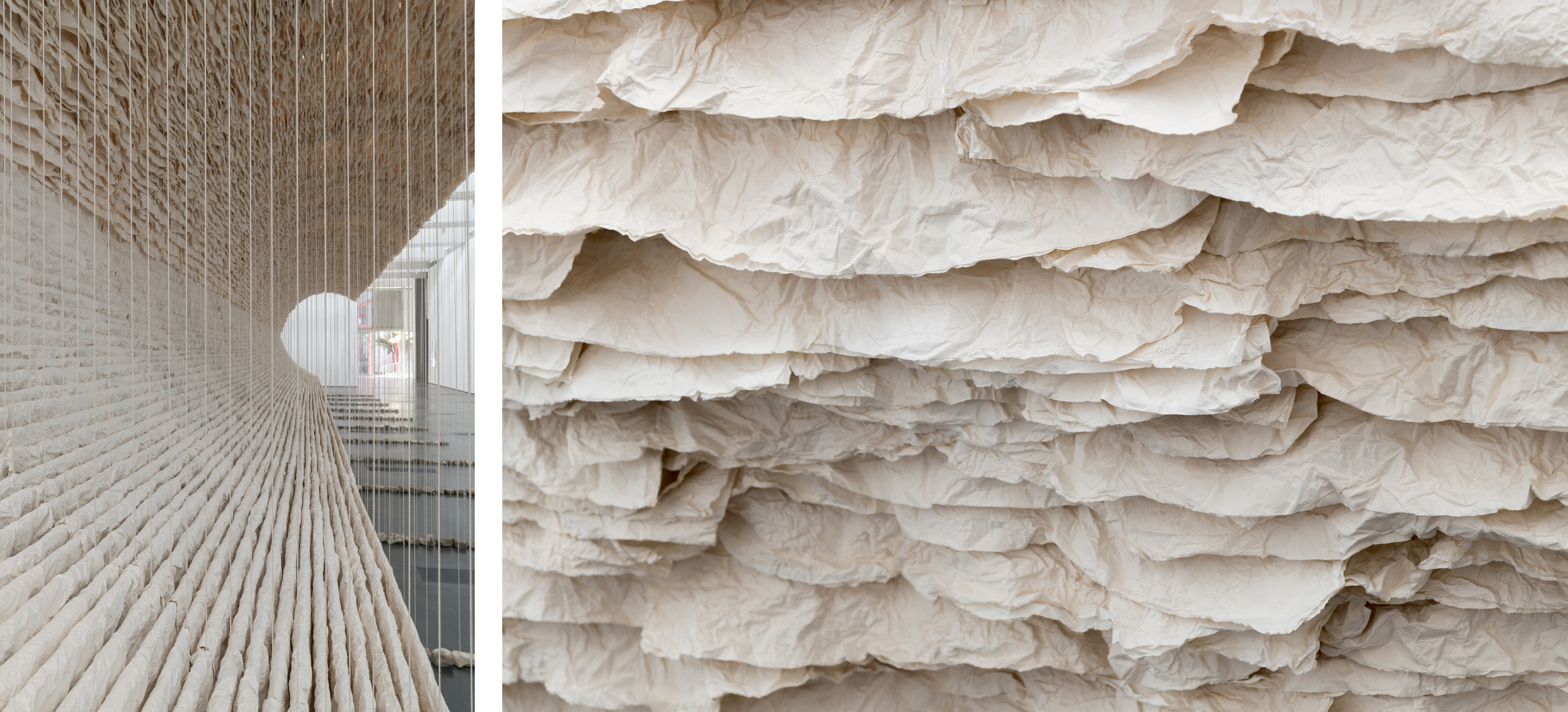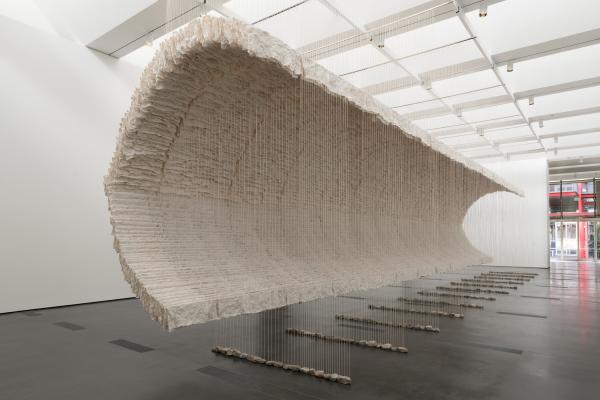Although paper has been present in the Western world as an artistic material for nearly a millennium, Chinese papermaking dates back even further, to the second century BCE. Xuan paper is traditionally made from a mixture of hemp, mulberry, and other natural plant fibers. It is the ground most commonly used for classical Chinese calligraphy and ink painting, and continues to be used by many Chinese artists today. Wave of Materials employs xuan paper not as a ground, but as a sculptural material and symbol of Chinese art history. The paper is presented at a monumental level in this work—the paper wave appears frozen in time as it crests and creates a calming effect, diffusing the overhead lighting. Suspended in the air, it shelters viewers from the surrounding gallery, isolating them within the work and establishing the overwhelming presence of Eastern art within a Western space.

Wave of Materials by the numbers:
- 3 weeks to install
- 22 people to install it (12 preps, 1 courier, and 9 registrars)
- 8,000 individual crumpled sheets of xuan paper
- 1,080 strings
- 12 rows of strings with stones
- 39 feet long x 11.5 feet wide
Wave of Materials is currently on view in the Resnick Pavilion ahead of the exhibition, The Allure of Matter: Material Art from China, on view June 2, 2019 through January 5, 2020 in BCAM.



